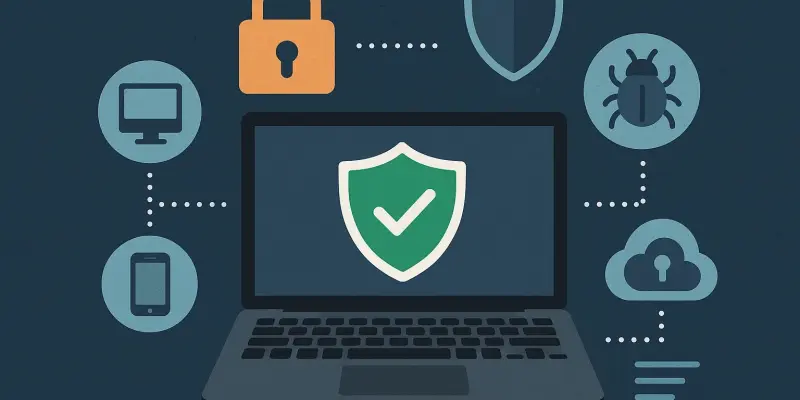The digital defense landscape is experiencing a transformative shift as endpoint security emerges as a central player in thwarting cyber threats. With the rise in remote work and mobile device usage, companies are under increasing pressure to protect their endpoint devices from security breaches. Forecasts suggest impressive growth, with the market projected to expand at a compound annual growth rate (CAGR) of 11.5% through 2032. Holding a significant market opportunity, key players like Microsoft, CrowdStrike, and SentinelOne are driving technological advances, shaping the future of digital defense.
Exploring the Transformational Impact of Endpoint Security
Today’s cybersecurity landscape is fraught with complexities as digital threats proliferate. Endpoint security has gained prominence as a critical mechanism for safeguarding diverse digital environments. Its ability to offer centralized protection across various devices—such as desktops, laptops, and mobile devices—is pivotal in an increasingly interconnected world. This detailed analysis delves into endpoint security’s potential to revolutionize traditional defense strategies, positioning it as an essential component in combating modern cyber threats.
Delving into Market Dynamics and Key Players
The evolution of endpoint security has been marked by significant growth driven by technological advancements. Initially, endpoint security solutions like antivirus and firewall protections formed the backbone of digital defense. Nowadays, organizations are leveraging more sophisticated tools like Endpoint Detection and Response (EDR) systems and AI-driven analytics to detect and combat emerging threats proactively. Companies such as CrowdStrike and Symantec are leading this charge, innovating solutions that bolster organizations’ security postures. These advancements highlight a continuous progression aligned with evolving threat landscapes and technological innovation.
Addressing Challenges and Opportunities in Endpoint Security
As more companies adopt BYOD policies and remote work models expand, the endpoint security landscape is becoming increasingly intricate. These trends have expanded attack surfaces, demanding more agile security responses. Businesses must redefine their cybersecurity strategies to address these evolving challenges while maintaining robust defense mechanisms. This segment examines the risks associated with increased digitalization while also exploring opportunities for companies to strengthen their security frameworks through integrated solutions.
Global Perspectives: Regional Trends in Endpoint Security
Geographical dynamics play a crucial role in how endpoint security solutions are deployed across the globe. North America leads due to its advanced infrastructure and rapid integration of cutting-edge technologies. Meanwhile, the Asia-Pacific region is emerging as a fast-growing market, driven by technological advancements and an intensified focus on securing digital ecosystems. Understanding these regional trends allows businesses to tailor their strategies, ensuring optimal endpoint protection that aligns with specific market needs.
Innovations Shaping the Future of Endpoint Security
The endpoint security market is on a trajectory of rapid innovation, with emerging technologies reshaping security practices. Cloud-based solutions and the integration of AI and machine learning are becoming fundamental, enabling enhanced threat detection and quick response times. Zero trust architecture, which demands verification at every network access point, exemplifies a paradigm shift toward more stringent security protocols. These innovations represent a step forward in addressing the sophisticated nature of current and future cyber threats.
Strategic Insights: Applying Market Findings
In an ever-evolving digital landscape, companies must prioritize agile, innovative endpoint security solutions to remain resilient against cyber threats. By adopting cloud-integrated defenses and fostering a culture of continuous learning and awareness, organizations can fortify their security frameworks. Key recommendations for businesses include embracing advanced technologies and focusing on compliance to navigate the complex cybersecurity environment successfully.
Harnessing the Power of Endpoint Security for Future Success
In summary, endpoint security has established itself as a critical component of digital defense. Its ability to offer comprehensive protection in an era marked by sophisticated cyberattacks underscores its enduring relevance. As businesses move forward, the insights gleaned from this analysis can provide a roadmap for strengthening endpoint defenses, ensuring sustainable security and resilience against unforeseen digital threats, paving the way for robust future protection strategies.

